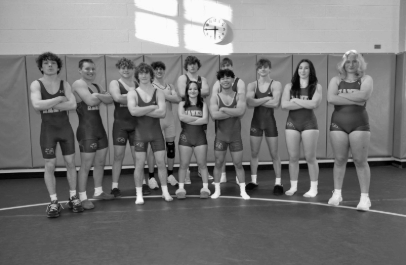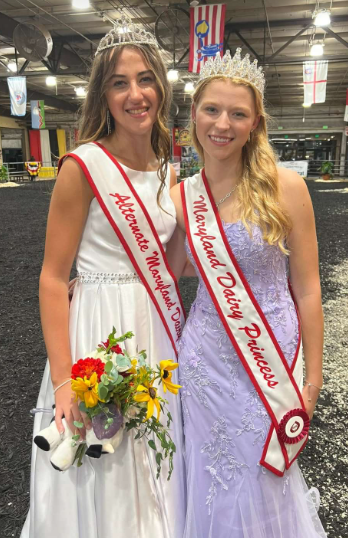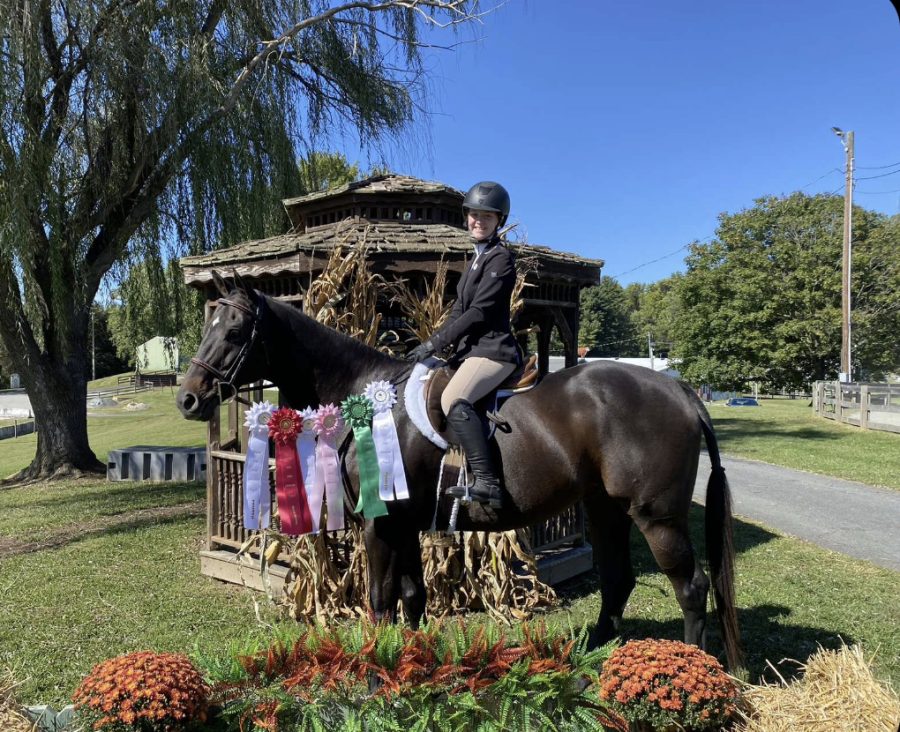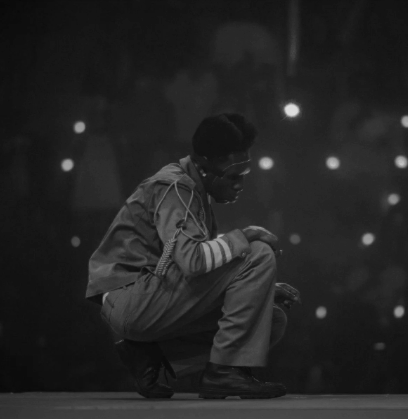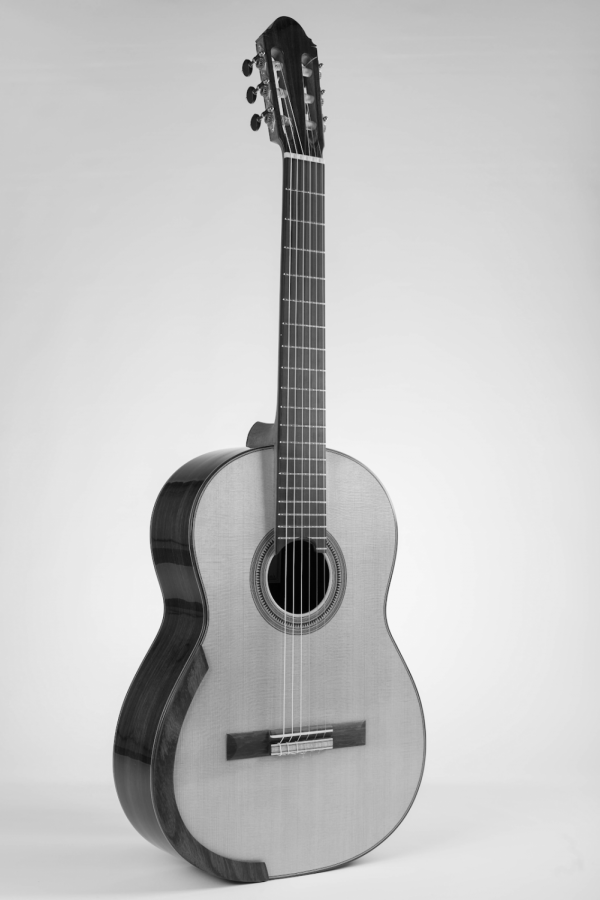David Pace Luthier; NH alum makes career of passion
June 5, 2018
Q) What is your NH background and when did you start to play guitar ?
A) I began playing guitar at the age of 13, in the seventh grade. I graduated from NH in 1991. In the last two years of high school, I played in the classical guitar ensemble as well as the Jazz band.
Q) What inspired you to make your own guitars?
A) I started playing on steel string acoustic and electric guitars, which are fairly inexpensive. But when I later became interested in the classical guitar (the traditional Spanish version), I soon learned that the quality was much more of a factor, since a high quality classical guitar needs to be built much more delicately and precisely in order to sound good. After learning that these instruments were outside of my financial reach, I started to entertain the idea of building one myself, so I bought a book on the topic. I was then about 18 years old.
I quickly learned that there were numerous barriers to getting started, from specialty tools to specific requirements like templates, molds, forms, and clamping devices which cannot be purchased, and need to be made specifically, according to the particular design of the instrument. So I shelved the idea, and some years went by.
Later, in 2001, I took a trip to Spain, and part of my agenda was to finally buy my first good quality hand-made guitar. I visited the workshops of a couple of Luthiers (stringed instrument maskers) and found a very interesting workshop in the southern part of the city of Valencia. This was not a single-artisan workshop like I expected, but rather a team who made a variety of instruments in a range of quality, from student-oriented models to professional instruments. At the helm was a master luthier by the name of Amalio Burguet. He was very kind and enthusiastic, and gave me a tour of the various workshop stations as well as his own projects. So
I to a chance to see the process in detail and at various stages.
So my interest was rekindled by not only what I saw that day, but the smell of freshly cut Spanish cedar, the camaraderie in the workshop, and the undeniable honesty that goes into the work.
I brought home from that trip not only a new guitar, but an obsession to finally build one myself. I read every book I could obtain on the topic, and began making my first instrument later that same year.
Q) Could you explain the process you go through when starting a new project?
A) My first instrument took seven months to build, because much of that time was spent creating a design as well as acquiring or making the specialty tools and devices. After that, the process became much faster with each instrument. It’s hard to say how much time it would now take for me to build a single instrument, because since I have been building professionally in recent years, I have been making them in batches, typically sets of four instruments at a time. I typically make a set of four in the spring, and a set of four in the fall for a total of eight instruments per year.
After meeting with a client to determine their preferences, and what fits them best in terms of measurements, the process begins with the selection of specific materials for the specific instruments. Each tonewood has certain sound characteristic and appearance which need to be matched with the other parts of the instrument, so that eventually all the colors, wood-grain patterns, and sound-qualities all work together for a desired result. Then the raw materials are processed in batches. The thicknesses of the tonewood plates are roughly dimensioned, and the separate parts are glued together. The materials for the sides are then bent with heat and steam, and next cut and placed into a mold which establishes the curved shape of the guitar. The other parts are then worked to further detail with thicknessing, carved bracing, and the construction of the wooden mosaic rosette that decorates the sound hole. Eventually all the separate parts are attached to the sides and neck assembly while it is in the mold. Toward the end of the construction phase, the shape of the neck is carved by hand, and a lot of detail work is done, such as the edge binding and edge beveling, and the installation of the frets and construction and attachment of the bridge. I do not outsource any of the parts; I build everything from raw materials with the exception of the tuning mechanisms, which I order from either Canada or Germany depending on my customer’s preference. After construction is complete, the instruments are varnished by hand in an old-world traditional method known as French polishing. This method has a lot to do with the quality of sound that results, as a proper French polished shellac varnish is very lightweight, allowing the wooden parts to fully resonate.
Q)What is your favorite part of this job?
A) Originally, what I liked most was the idea of building something of use, value, and complexity from a pile of simple raw materials, and also the process itself; the tactile qualities of the materials, and working with my hands.
While I still enjoy these things, what I like most about the work changed when I began to do the work professionally. So lately, what I like most about the work is the people it has brought into my life. I have met many wonderful people through this work, and many of them have become good friends, not to mention the influence many of them have had on me as a guitarist. I have become a better musician as a direct result of these friendships, as well as the fellowship that exists among guitarists. I continue to learn new things at times when the attention inevitably refocuses on the music itself.
One of the most important things about this work to me is that every day is an honest day. There are no shortcuts to take, and one’s true intentions always show up in the end result. This work requires prioritization, patience, focus, discipline, vision, honesty, integrity, good communication skills, and ultimately the ability to understand and relate. Also, one needs to be capable of enjoying large periods of time in solitude, contention with oneself and happiness with one’s inner thoughts, and the ability to contain and channel distractions. These qualities are not established in some fixed state, but they are rather maintained, or developed through practice. For me, guitar making has provided many opportunities to practice these things, and like my creations, I am a work in progress.
Q) Which of your creations are you most proud of?
A)While the instruments I build are a little bit different from one to the next, it’s not what they are in particular that stands out to me, but rather who owns them and what is done with them that gives me a sense of accomplishment. If one of my clients makes a deeper connection with the music as a result of one of my instruments, then I am happy. It also matters to me if one of my instruments has been used to make a beautiful recording, has helped deliver music to a concert audience, or has assisted a client to win a competition. Sometimes I get an email or a phone call from a customer for no other purpose other than them wanting to tell me how much they love their guitar, how it enables them to produce a certain quality of sound, or how precise adjustments have enabled them to play more challenging music. It makes me proud of an instrument if a client can detect the care and precision I put into their instrument by what they can hear, feel, and see. I am also proud when one of my guitars is purchased by a customer in a far-away place like Japan or Australia, and knowing that my work gets to live there.
Q) What other types of musical activities do you do in your free time?
A)“While my activities in guitar making have gotten attention due to how rare that sort of thing is, what actually matters most to me is the work I am doing at Music Land in Bel Air as a private guitar instructor. I have been teaching there for many years. I absolutely love my students, and I’m continually inspired by their interest and aspirations. Whether they play casually, or are more serious makes little difference to me, because in my view, the instrument welcomes all, and can be enjoyed in so many different ways. Because my students range widely in age and musical preference, they keep me interested in the work, and they keep me interested in playing music. I am constantly learning new things from them. Otherwise, I continue to play and learn new music on the classical guitar, and play in a classical guitar trio.”



